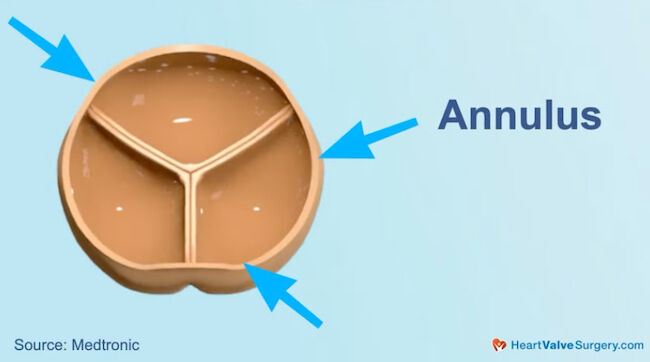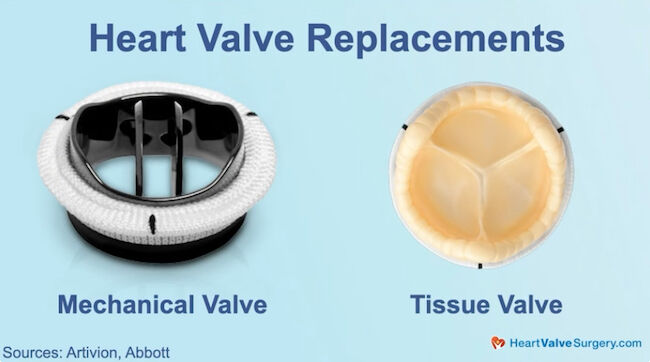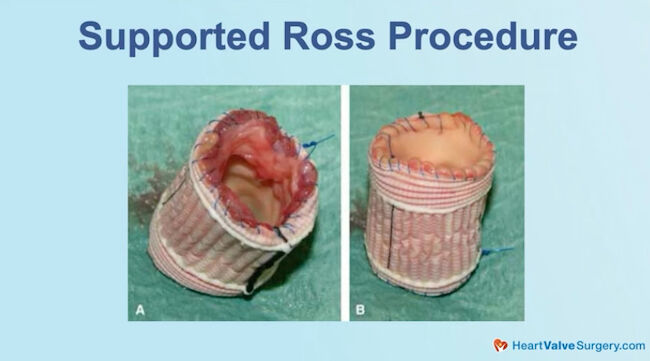Aortic Regurgitation: What Should Patients Know?
Written By: Allison DeMajistre, BSN, RN, CCRN
Medical Expert: Pedro Catarino, MD, Director of Aortic Surgery, Cedars-Sinai, Los Angeles, California
Reviewed By: Adam Pick, Patient Advocate, Author & Website Founder
Published: April 8, 2025
When a patient receives a diagnosis of aortic valve regurgitation, the saying, “Knowledge is Power,” takes on a whole new meaning. The patients in our community with aortic valve regurgitation, a leaky valve, are at many different stages of their journey. Some patients have been living with aortic valve regurgitation for many years and are in the “watchful waiting” phase, which means their physician closely monitors with regular echocardiograms as they may need surgery in the future.

Other patients may have just been diagnosed with the valvular defect, also known as aortic insufficiency, and are beginning to navigate the vast amount of information available. Some patients already have their surgery scheduled and are counting down the days to their operation. It doesn’t matter where one is on the journey of aortic valve regurgitation, a key priority becomes learning more and understanding the options to fix the problem and return to normal life activities.
I wanted to provide our community with a current and comprehensive understanding of aortic regurgitation and its treatments. That’s why I recently met with Dr. Pedro Catarino, Director of Aortic Surgery at Cedars-Sinai in Los Angeles. With his extensive experience in cardiac surgery and his sub-specialty in aortic valve repair, Dr. Catarino is uniquely positioned to share his invaluable insights and expertise about aortic valve regurgitation.
Key Learnings About Aortic Regurgitation
Here are key insights shared by Dr. Catarino:
- Learn the important facts about the aortic valve. “Aortic regurgitation is a fancy way of saying that you have a leaky aortic valve,” said Dr. Catarino. “The aortic valve is the valve between the heart’s main pumping chamber and your aorta. The aorta is the blood vessel that takes blood all over your body. When the aortic valve closes, it’s responsible for the lower number of your blood pressure. So, you may check your blood pressure at home. You get the top number, which is when the heart beats forward, and then you get the bottom number when the heart relaxes.” Catarino explained that the heart doesn’t relax down to zero because the aortic valve keeps that blood pressure up. The textbook number for the lower blood pressure is 80, but the number would be much lower if the aortic valve wasn’t there.
- Understand the common structural problems with the aortic valve. Dr. Catarino stated, “The aortic valve is a semi-lunar valve, meaning it is a half-moon shape. There are three of these half-moons, and they are close against each other, and when the leaflets press together, the valve is competent. When they don’t press together, you get a leak or aortic regurgitation. The causes of aortic regurgitation are anything that disrupts that closure of the half-moon valves, and that problem could be with the leaflets themselves. Perhaps one of the most common reasons is patients born with two leaflets slightly fused. We call that a bicuspid valve, which can lead to a leaky valve. Also, if the ring of the valve, which we call the annulus, is pulled slightly apart, those half-moons won’t quite close centrally, and you can get a leak. Also, anything that destroys the leaflets, such as an infection, could also cause aortic regurgitation.”

- What are the symptoms of aortic regurgitation? “A Leaky valve results in the heart having to do more work because each time it beats it expels all the blood, but with aortic regurgitation, some of that blood comes back, and the heart has to do extra work,” said Dr. Catarino. “The heart can compensate to a certain extent for the leak by dilating a bit.” He explained that it works harder when the heart is more dilated. An echocardiogram will show that the left ventricle ejection fraction will increase, which shows the heart is working extra hard. “There comes a point when the heart reaches the limit of its compensation and then you start to get symptoms like shortness of breath on exertion or perhaps even chest pain as the pressure in the heart goes up,” said Dr. Catarino. “Sometimes the stretch of the heart can cause arrhythmias, which is when your heartbeat can be either very fast or irregular.” Dr. Catarino also said that if you’ve had aortic regurgitation for a while, it may even cause damming of the blood behind the valve which in turn causes fluid retention. Some symptoms of fluid retention include swelling in the ankles or other places like the stomach.
- What are the risks to a patient’s health from aortic regurgitation? Dr. Catarino stated, “Well, initially I said that the heart can compensate for the aortic regurgitation, but there comes a point when the heart muscle gets bigger, begins to scar up, and will get fibrosis. Once that starts to develop the chance to recover that muscle by having the valve repaired or replaced is diminished and it starts a patient down a path towards heart failure, which is the eventual result of untreated aortic regurgitation.”
- What are the treatment options for aortic regurgitation to prevent heart failure? “Aortic regurgitation is a mechanical problem, so it really needs a mechanical solution, which means surgery,” said Dr. Catarino. “There are two broad surgical options, and I’ll go through the standard option first, which is a replacement of the valve. It’s very widely practiced, and there have been hundreds of thousands of aortic valve replacements.” Dr. Catarino said there are two options for valve replacement: a mechanical valve or a tissue valve.

- The mechanical valve replacement. “First, there is a mechanical valve made of carbon fiber that is extremely durable. It will last a lifetime, even in a young person.” Dr. Catarino explained that mechanical valve replacement requires a patient to take blood-thinning medications to prevent a blood clot from forming on the valve, which could cause a stroke or a valve malfunction. The effects of the blood-thinning medication can vary for each patient, and regular blood tests can impede some people’s lifestyles.
- The tissue valve replacement. “The alternative to a mechanical valve is a tissue valve,” said Dr. Catarino. “Now we mostly use cow tissue valves. They’re not cow valves but valves made with the lining of a cow’s heart, which makes a reproducible material that can be made in a factory into a three-leaflet valve that looks much like our native valves. It comes on a strut, which is what the surgeon sews into place to do the replacement.” He explained that the advantage of a tissue valve is that it is friendly to the bloodstream and doesn’t require blood thinners. However, since it is a natural tissue, it suffers a lot of wear and tear similar to a native valve, so its durability is limited compared to the mechanical valve. “I typically tell patients that it will last about 15 years, at which point it would need some other intervention. It could be repeat surgery, or it could be a transcatheter valve replacement.”
- Aortic valve repair may be another option. “Earlier I mentioned one of the ways in which the valve could leak is if the semi-lunar leaflets are not opposing because they’ve been pulled apart by a stretched ring,” said Dr. Catarino. “The surgeon can tighten that ring, bringing the leaflets back together so they oppose and don’t leak. I also said that a big cause was the fusion of two leaflets, which disrupts how they come together. There are some surgical techniques to lift up the valve, stop it from prolapsing, and get opposition back. With those specialized techniques, we’re able to preserve the native valve and that’s a good thing because it’s the most durable and not susceptible to infection because there isn’t a foreign body in the bloodstream.”
- Other forms of aortic replacement or reconstruction. “Yes, of course, there is also the Ross Procedure, which is another way of keeping your own native valve. Two valves in the heart have these semi-lunar leaflets, the aortic valve and the pulmonary valve.” Dr. Catarino explained that since the pulmonary valve has the exact structure of the aortic valve, they can take the pulmonary valve out of its location, put it into the aortic position, and put a donor valve into the pulmonary position. “The advantage is that the pressures in the pulmonary circulation are much lower, so the donor valve in the pulmonary position will be more durable. The Ross procedure is mostly done for patients with aortic stenosis, a narrowed aortic valve.” Dr Catarino also said they have a technique at Cedars called the Supported Ross Procedure. “In the context of aortic regurgitation, the pulmonary valve, used to much lower pressures, tends to dilate and stretch over time. With the Supported Ross, we put the pulmonary valve inside another conduit made of special medical grade polyester that goes around the outside of the pulmonary valve and allows it to maintain its structure in the systemic circulation with a higher pressure.”

- What is the life expectancy after a procedure to fix aortic valve regurgitation? “So, I have excellent news for you. We can bring patients’ life expectancy back up to the normal expected for their age with any of these procedures, whether it’s repair, repair with aneurysm correction, or replacement.”
Thanks Dr. Catarino and Cedars-Sinai!
On behalf of all the patients at HeartValveSurgery.com, and patients all over the world, thanks so much to Dr. Pedro Catarino for the work that you and your team are doing at Cedars-Sinai to help patients with aortic regurgitation.
Related Links:
- See Dr. Pedro Catarino’s Interactive Surgeon Profile
- Discover the New Ross Procedure Patient Education Center
Keep on tickin!
Adam
P.S. For the deaf and hard-of-hearing members of our patient community, we have provided a written transcript of our interview with Dr. Catarino below.
Video Transcript:
Adam Pick: Hi, everybody. It’s Adam with HeartValveSurgery. com, and we’re at Cedars Sinai Medical Center in Los Angeles, California. I am thrilled to be joined by Dr. Pedro Catarino, who is the Director of Aortic Surgery. Dr. Catarino, it is great to see you and thanks so much for being with me today.
Dr. Pedro Catarino: Thank you for coming to talk to me, Adam. It’s nice to meet you finally.
Adam Pick: Yeah. And so let’s talk Dr. Catarino about a very important disease which is aortic regurgitation. Can you explain to all the patients in our community, what is aortic regurgitation?
Dr. Pedro Catarino: Certainly. Uh, so aortic regurgitation is really a fancy way of saying that you have an a leaky aortic valve. Uh, the aortic valve is the valve between the main pumping chamber of the heart and your aorta. The aorta is the blood vessel that takes blood all over your body. You know, the aortic valve, when it closes, it’s responsible for that lower number on your blood pressure. You know, so you may check your blood pressure at home, you get the top number, which is when the heart beats forward, say it’s 120 or something like that, and then you get the bottom number. The bottom number is a bit lower, it’s when the heart relaxes.
And it doesn’t relax down to zero because of the aortic valve. The aortic valve keeps your blood pressure up. Um, so if it wasn’t there, you know, that lower number would be very much lower than, say, 80, which is what the textbooks say it should be. And the aortic valve is a semi lunar valve. That means it’s half moon shape.
So like that. And there are three of these half moons and they close against each other like this. And um, so when the leaflets press together, that’s how the valve is competent. And it’s when they don’t press together is when you, when you get a leak or aortic regurgitation.
The causes of aortic regurgitation are anything that could disrupt that closure of those half moon valves.
And so that could be a problem with the leaflets themselves. And perhaps one of the most common reasons are patients who are born with two of the leaflets slightly fused. And we call that a bicuspid valve. And that can, uh, lead the patient to get a leaky valve. Or If the ring of the valve, what we call the annulus, is pulled slightly apart, then those half moons come slightly apart and don’t quite close centrally and you can get a leak.
And then anything that destroys the leaflets themselves, for example an infection, that could also cause aortic regurgitation.
Adam Pick: What are the symptoms of aortic regurgitation?
Dr. Pedro Catarino: A leaky valve results in the heart having to do more work, because each time it beats, of course it expels all the blood, but then some of that blood comes back, so it’s got to do extra work. And the heart can compensate to a certain extent for having the leak, um, and it does that by dilating a bit.
It’s slightly more dilated. And initially, it actually works, uh, more than, So the left ventricle ejection fraction, if you’re having an echo, this is that percentage number that your doctor gives you, the EF. That number may actually go up. Sort of working extra hard. There comes a point when the heart reaches the limit of its compensation and then you start to get symptoms.
And those symptoms will be something like shortness of breath on exertion or perhaps even chest pain as the pressure in the heart goes up. And sometimes the stretch of the heart can cause arrhythmias. Arrhythmias are palpitations. That’s when your heartbeat can be either very fast or irregular. Uh, so any of those are signs that you have aortic regurgitation.
If you’ve had it for a little while, you may even get a damming of the blood behind the valve. And so you can retain fluid. And, uh, you can notice you may have swelling of your ankles or swelling in other places like your tummy.
Adam Pick: And now a big question I’m sure patients are wondering is, what are the risks? to a patient’s health from aortic regurgitation.
Dr. Pedro Catarino: Uh, yes, well, I, you know, I said initially that the heart can compensate for the aortic regurgitation.
Um, but there comes a point when it starts to, the muscle gets bigger, just like any muscle, but it begins to scar up, so the heart muscle will get fibrosis. And once that starts to develop, the, chance for you to recover that muscle by say having the valve repaired or replaced is diminished and you’re starting down a path towards heart failure so you know the the eventual result of untreated aortic regurgitation is heart failure.
Adam Pick: Dr. Caterino, we obviously want to help our patients prevent heart failure. So the big question I’m sure they’re wondering is, what are the treatment options for aortic regurgitation?
Dr. Pedro Catarino: so aortic regurgitation is a mechanical problem. It really needs a mechanical solution, which means surgery. And there are two broad surgical options.
I’ll go through the standard option first, which is replacement of the valve. It’s very widely practiced. There have been many hundreds of thousands of valve replacements for the aortic valve. And in valve replacement, really there are two options. There’s a mechanical valve, so this is a valve that’s made of carbon fiber.
It’s extremely durable. It will last a whole lifetime, even if you put it in a young person. Um, but it’s not so friendly on the bloodstream, so you need to take special tablets to thin your blood. Otherwise, you might form a clot on the, on the, uh, aortic valve itself, and that clot could cause a stroke or malfunction of the valve.
The tablets which we use are also, um, you know, they vary from patient to patient, their effect varies. And so you need to have blood tests as well as taking the tablets. And that can be an impediment to some people’s lifestyle. So the alternative to a mechanical valve is a tissue valve. Mostly now we use, um, cow, tissue valves.
They’re not cow valves. They’re valves made with the lining of a cow’s heart, which makes a very, um, reproducible material that can be formed, you know, in a factory and made into a three leaflet valve that looks very much like our native valves. It’s on a, it comes on a strut, and that strut is what the surgeon sews in place to do the replacement.
It has the advantages, it’s quite friendly on the bloodstream, so you don’t need to take blood thinners. However, it is a natural tissue, and so it suffers a lot. wear and tear, much like our native valves do, and so its durability is limited compared to the mechanical valve.
And typically I tell patients that it would last about 15 years, at which point it would need some other intervention. It could be repeat surgery, or it could be a transcatheter valve replacement. So I mentioned that there was an alternative which is valve repair. So this is where you keep your own leaflets, but the surgeon, uh, repairs them, and so that they get rid of the leak.
So earlier on I said that one of the ways in which the valve could leak is if those leaflets were, uh, Semi lunar leaflets are not opposing because they’ve been pulled apart by a stretched ring. And so the surgeon can tighten that ring, bring those leaflets back together so that they oppose and you don’t get a leak.
And then also I said that a big cause was fusion of two of the leaflets which disrupts the way they come together. And there are some surgical techniques to lift up the valve, stop it prolapsing and get apposition back. And with those specialized techniques. We’re able to preserve your native valve and that’s a good thing because it’s the most durable Replacement and also not susceptible to infection because you have a foreign body in your bloodstream
Adam Pick: Dr. Catarino, fascinating when you’re talking about aortic valve repair, which is a form of reconstructing the valve. I’m curious to know, are there any other forms of replacement or reconstruction that your team here at Cedars is helping patients with?
Dr. Pedro Catarino: Uh, yes, of course there is also the Ross procedure, and that is another way of keeping your own native valve.
So there are two. valves in your heart that have these semi lunar leaflets, the aortic valve, which in your case, you have aortic regurgitation, so it’s malfunctioning, but also the pulmonary valve. It’s exactly the same structure as the aortic valve. So we could take the pulmonary valve out of its location and put it in the aortic position, and then we can put another valve in the pulmonary position.
The advantage of that is that this, the pressures in the pulmonary circulation are much lower. So the second valve in the pulmonary position will be more durable because of that. And we, we call that a Ross procedure. It’s mostly done for patients who have a aortic stenosis, a narrowed aortic valve. And in the context of aortic regurgitation, the Pulmonary valve, which is used to much lower pressures, has a tendency to dilate, to stretch over time.
And so we have a technique here at Cedars, which is known as the supported Ross, where we put the pulmonary valve inside another conduit, uh, it’s made of a, it’s a special medical grade polyester that goes around the outside of the pulmonary valve and just allows it to maintain its structure. Now in the systemic circulation with a higher pressure.
Adam Pick: Dr. Catarino, I love all the innovation that the folks here at Cedars are using to help these patients with aortic regurgitation. What is my life expectancy for a procedure that is aortic valve that’s regurgitant normal?
Dr. Pedro Catarino: So, I have very good news for you, is that we can bring patient’s life expectancy back up to the normal expected for their age with any of these procedures, whether it’s repair, repair with aneurysm correction, or indeed replacement.
Adam Pick: Wow. Well, Dr. Catarino, on behalf of all the patients at HeartValveSurgery.com, patients all over the world, thanks so much for the work that you and your team are doing here at Cedars Sinai to help patients with aortic regurgitation. Thanks so much for being with me today.
Dr. Pedro Catarino: Thank you, Adam, and thank you for the opportunity to talk to you about this.




